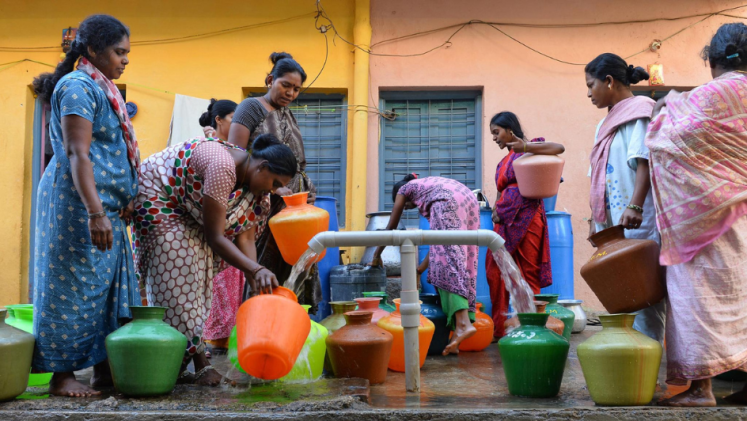Groundwater is a precious source of freshwater. It supplies over 2 billion people with water to drink, and irrigates the crops that feed the world. However, it is not boundless. Globally, we are using it unsustainably and depleting it faster than it can naturally be replenished. As we continue to expend our groundwater, we are fast approaching a tipping point where, if crossed, it may no longer be accessible for us and future generations.
The Interconnected Disaster Risks report from UNU-EHS named the issue of groundwater depletion as one of six global risk tipping points the world is fast approaching. Here are five facts on groundwater depletion:
Groundwater can take hundreds to thousands of years to accumulate
Approximately 30 per cent of the of the world’s freshwater is stored as groundwater. This natural supply of water is located deep underground in aquifers, where water often has accumulated over lifetimes. Aquifers are naturally recharged by rainfall and surface water infiltration into the ground. The depths of aquifers vary. To reach them, wells must be bored deep beneath earth’s surface. Typically, when aquifer levels drop, wells are bored even deeper.
We are extracting more than is being recharged
Currently, 21 of 37 of the largest aquifers are depleted faster than they can recharge. Like drinking water through a straw, extracting water from a well lowers the water table, unless it is balanced out by recharge from the surface. When the water table in an aquifer drops below where the well can reach, this increases the risk that systems that depend on this water, like irrigation, will stop functioning as they normally would. The Interconnected Disaster Risks report defines this as a risk tipping point.
Groundwater depletion poses a major risk to global food supply
Globally, 70 per cent of groundwater withdrawals are used for agricultural production. Agricultural intensification is a major factor pushing groundwater levels to their limits. The issue is especially prevalent in countries such as India and the United States, where aquifers in key agricultural regions are being overexploited. These countries are also major exporters of their crops, meaning a local problem can quickly become a global one.
We risk losing a critical safety net when other supply options run low
Groundwater is one of the most reliable sources of freshwater. When there is an insufficient amount of rainfall or other surface water options are scarce, groundwater is often used to compensate. However, as we extract it faster than it can be replenished, our ability to use this coping mechanism severely diminishes. Therefore, we must preserve this resource for when we need it the most, or we risk depriving future generations of this option.
We don’t have to stop using groundwater, but we must use it smarter
Current policies incentivize groundwater usage and prioritize profits over conservation. Instead, we must consider that water is a shared resource which is not infinite. We can tackle wasteful use of water by using efficient technologies such as “drip irrigation,” which drops water closer to the roots of crops than typical sprinklers, or we plant crops that use less water. We can even boost conservation efforts to restore wetlands and green areas to increase water infiltration into the ground. By changing our behaviors now, we can avoid this tipping point before it is too late.



